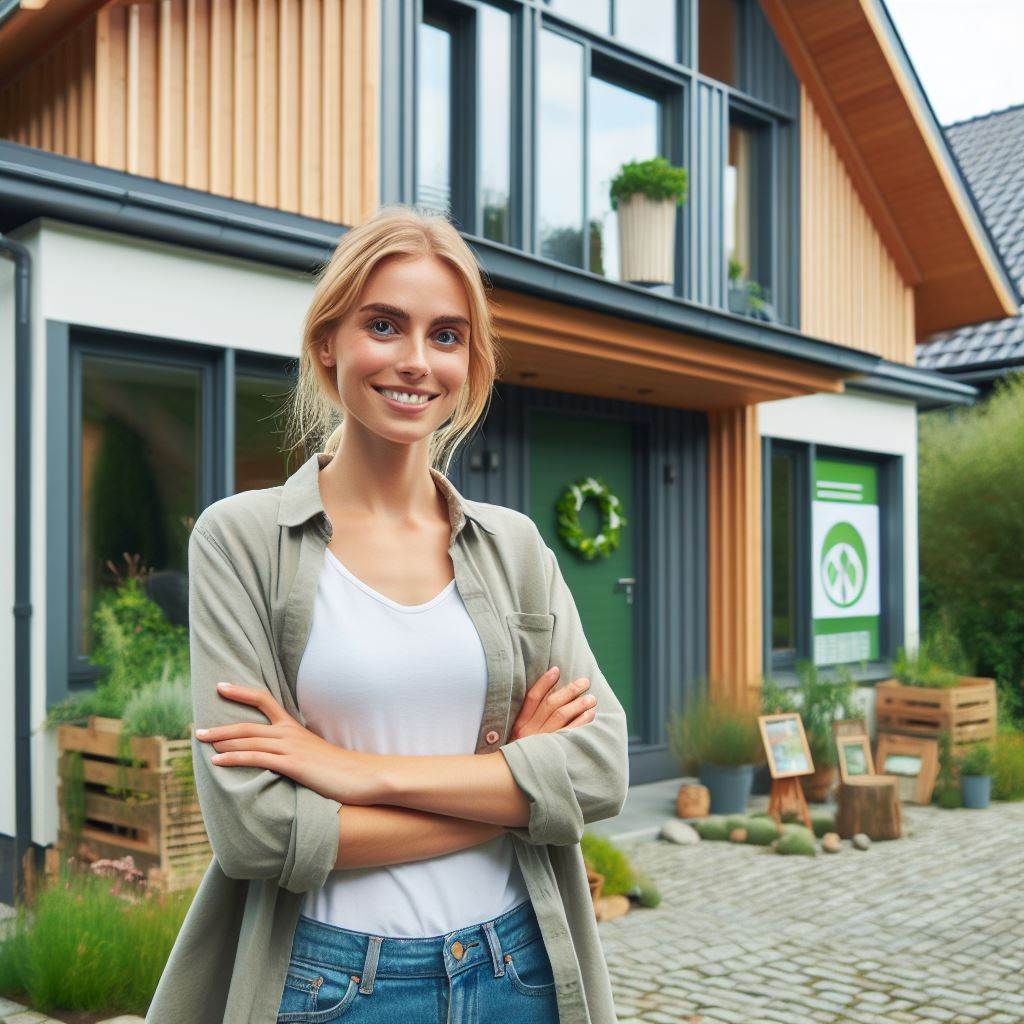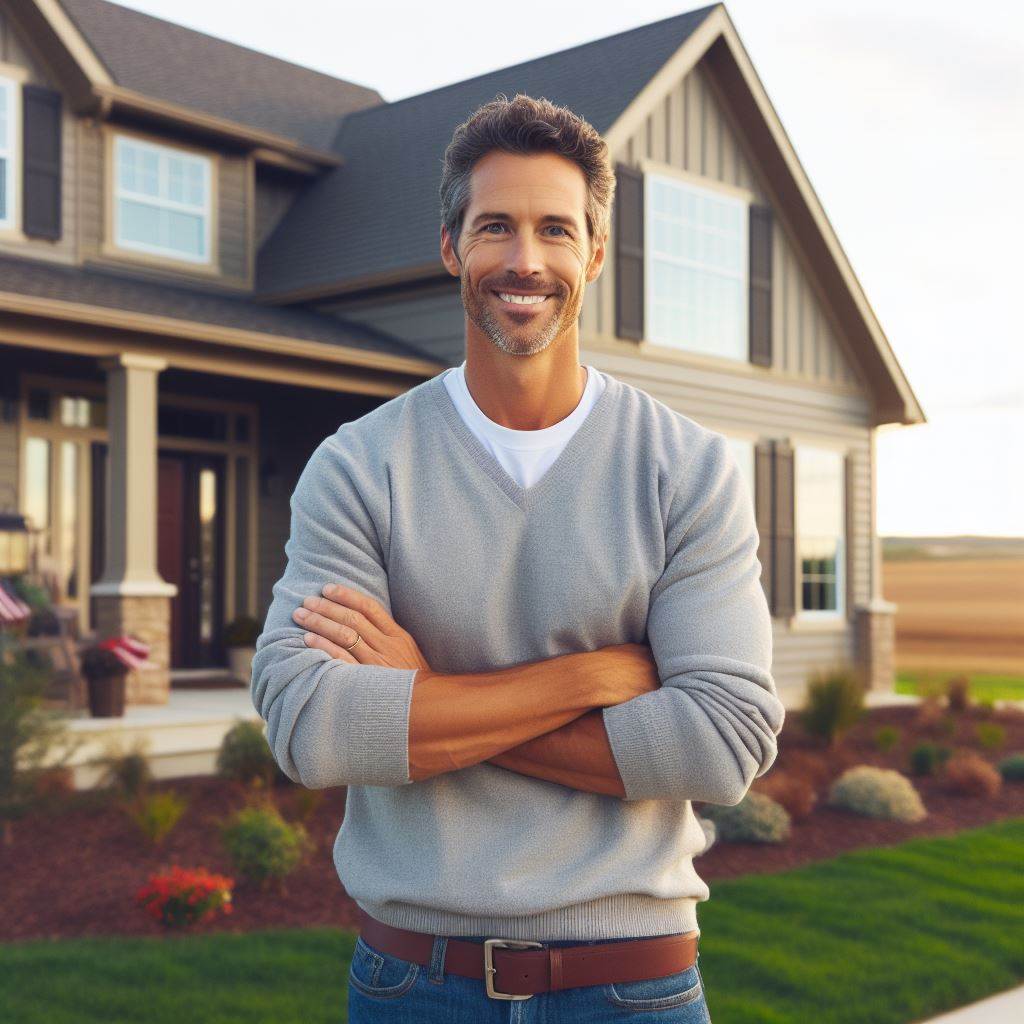Introduction
Sustainable property investments have become more than just a trend; they are now a cornerstone of smart, forward-thinking real estate portfolios.
As the world grapples with the challenges of climate change and environmental degradation, investors are increasingly turning their attention to sustainable options that not only promise financial returns but also contribute positively to the planet.
In this post, we delve into the realm of sustainable property investments, focusing specifically on the opportunities present in the Midwest region of the United States.
The Midwest might not be the first place that comes to mind when one thinks of sustainability, but it’s quickly emerging as a hotbed for eco-conscious investments.
Traditionally known for its agriculture and manufacturing industries, the Midwest is now witnessing a surge in sustainable initiatives across various sectors, including real estate.
Cities like Minneapolis, Chicago, and Indianapolis are leading the charge, with developers, investors, and policymakers coming together to promote greener, more resilient communities.
The growing interest in sustainable investments in the Midwest can be attributed to several factors.
Firstly, there’s a shifting mindset among investors who recognize the long-term benefits of aligning their portfolios with environmental, social, and governance (ESG) principles.
As consumers become more eco-conscious, demand for sustainable properties is on the rise, driving up their value and attractiveness to investors.
Additionally, government incentives and regulations aimed at promoting sustainability further fuel this momentum, creating a conducive environment for green real estate projects to thrive.
In the following sections, we’ll explore some of the Midwest’s best sustainable property investments, highlighting innovative projects that not only generate attractive returns for investors but also contribute positively to the environment and communities they serve.
Benefits of sustainable property investments
Investing in sustainable properties isn’t just about environmental consciousness; it’s also a smart financial move.
In this section, we’ll explore the numerous financial benefits of investing in sustainable real estate in the Midwest.
Long-Term Financial Gains
One of the most compelling reasons to invest in sustainable properties is the promise of long-term financial gains.
While initial investment costs may be higher due to eco-friendly features, the savings accrued over time are substantial.
Energy-efficient appliances, smart building designs, and renewable energy sources significantly reduce utility bills, resulting in lower operational expenses for property owners.
These savings translate into increased cash flow and higher profitability over the property’s lifespan.
Rising Demand for Eco-Friendly Properties
With growing environmental awareness, there’s a surge in demand for eco-friendly homes and buildings.
Millennials and Gen Z, in particular, prioritize sustainability and are willing to pay a premium for properties that align with their values.
As more buyers and tenants seek environmentally conscious living spaces, sustainable properties enjoy higher occupancy rates and reduced vacancy periods.
Investing in green real estate positions investors to tap into this expanding market and secure steady rental income.
Potential for Enhanced Returns
Sustainable properties often yield higher rental incomes and experience greater appreciation in property values.
Tenants are attracted to eco-friendly features like energy-efficient heating and cooling systems, low-flow water fixtures, and LEED certifications, resulting in higher demand and the ability to command premium rents.
Additionally, governments and municipalities incentivize sustainable development through tax breaks, grants, and subsidies, further enhancing investors’ returns.
Over time, as sustainability becomes the norm, properties with eco-friendly features are likely to see accelerated appreciation, providing investors with substantial capital gains.
In fact, investing in sustainable properties in the Midwest offers numerous financial advantages.
From lower operational costs and increased cash flow to higher rental yields and property appreciation, eco-friendly real estate presents an attractive opportunity for investors looking to achieve both environmental and financial objectives.
By embracing sustainability, investors can secure stable returns while contributing to a greener future.
Read: Interest Rates & Rentals: What Works?
Factors to consider when investing in sustainable properties
In the realm of real estate investments, sustainability has emerged as a key consideration for investors seeking long-term value and positive impact.
When contemplating investments in sustainable properties, several crucial factors warrant careful consideration.
The importance of location and market demand
Firstly, the importance of location and market demand cannot be overstated.
Investing in sustainable properties in regions with high demand for eco-friendly living spaces ensures a steady stream of tenants or buyers.
The Midwest, with its burgeoning interest in sustainability and green initiatives, offers ample opportunities for such investments.
Understanding local demographics and preferences is essential for selecting the right location within the region.
The significance of energy-efficient features and certifications
Secondly, energy-efficient features and certifications play a pivotal role in the attractiveness and viability of sustainable properties.
Properties equipped with solar panels, energy-efficient appliances, and smart technologies not only reduce operational costs but also appeal to environmentally conscious tenants.
Moreover, certifications like LEED (Leadership in Energy and Environmental Design) or ENERGY STAR signify adherence to rigorous sustainability standards, enhancing the property’s value and marketability.
The potential impact of sustainable properties on the environment and community
Furthermore, the potential impact of sustainable properties on the environment and community cannot be overlooked.
By reducing carbon emissions, conserving resources, and promoting eco-friendly practices, these properties contribute positively to environmental sustainability.
Additionally, they often catalyze community development by fostering a sense of stewardship and promoting healthier living environments.
Sustainable properties can serve as catalysts for revitalizing neighborhoods and attracting investment to underserved areas, thereby fostering economic growth and social well-being.
In short, investing in sustainable properties in the Midwest presents a promising opportunity for investors seeking both financial returns and positive societal impact.
By carefully evaluating factors such as location, market demand, energy-efficient features, and community impact, investors can align their investments with sustainability goals while reaping long-term benefits.
Ultimately, sustainable properties not only offer a sound investment proposition but also contribute to a more resilient, equitable, and environmentally responsible future.
Read: Rural vs Urban: Real Estate Trends 2024
Top sustainable property investment opportunities in the Midwest
Specific cities or regions known for their sustainable development initiatives
When it comes to sustainable property investments, the Midwest offers a plethora of opportunities for investors looking to make a positive impact on both the environment and their financial portfolios.
With a growing focus on green initiatives and eco-friendly development, several cities and regions stand out as prime locations for sustainable property investments.
The availability of tax incentives and grants for sustainable property investments
One notable city leading the charge in sustainable development is Minneapolis, Minnesota.
Known for its commitment to renewable energy and green building practices, Minneapolis offers investors a range of opportunities to invest in sustainable properties.
The city’s Green Cost Share Program provides financial incentives for property owners to implement energy-efficient upgrades, making it an attractive option for those looking to reduce their carbon footprint while maximizing returns.
Another promising destination for sustainable property investments is Madison, Wisconsin.
With its strong emphasis on sustainability and environmental stewardship, Madison has become a hub for green building projects and eco-friendly neighborhoods.
Investors can take advantage of programs like the Sustainable Madison Plan, which offers grants and incentives for sustainable development initiatives, further enhancing the appeal of investing in this vibrant city.
Notable green building projects or eco-friendly neighborhoods in the Midwest
In addition to Minneapolis and Madison, other cities in the Midwest are also making strides in sustainable development.
Chicago, Illinois, for example, has implemented various tax incentives and grants to encourage property owners to adopt green building practices.
From LEED-certified office buildings to eco-friendly residential developments, Chicago offers a diverse range of investment opportunities for those passionate about sustainability.
When considering sustainable property investments in the Midwest, it’s essential to research specific tax incentives and grants available in each region.
Many states and municipalities offer financial support for green initiatives, making it easier for investors to achieve their sustainability goals while maximizing returns.
In essence, the Midwest presents a wealth of opportunities for investors interested in sustainable property investments.
From Minneapolis to Chicago, cities across the region are embracing green initiatives and offering incentives for property owners to invest in environmentally friendly projects.
By capitalizing on these opportunities, investors can not only contribute to a more sustainable future but also secure attractive returns on their investments.
Read: Real Estate Tips in a High Rate Scenario

Case studies of successful sustainable property investments in the Midwest
In the heart of the Midwest, where rolling plains meet bustling urban centers, sustainable property investments are reshaping the landscape of real estate.
Investors are not only reaping significant financial returns but also leaving a positive impact on the environment and surrounding communities.
Let’s delve into some compelling case studies that exemplify the success of sustainable property investments in the Midwest.
Examples of investors who have achieved significant returns through sustainable property investments
One standout example is the redevelopment project led by GreenVest Investments in downtown Detroit.
By repurposing abandoned warehouses into energy-efficient loft apartments, GreenVest not only revitalized the neighborhood but also achieved impressive financial gains.
Their strategy involved implementing green technologies such as solar panels, energy-efficient appliances, and rainwater harvesting systems.
These features not only reduced operational costs but also attracted eco-conscious tenants, resulting in high occupancy rates and soaring property values.
Similarly, in Minneapolis, Sustainable Ventures Group transformed a dilapidated industrial site into a vibrant mixed-use development.
By prioritizing sustainable design principles, such as passive solar heating and green roofs, they created an eco-friendly living and working environment.
The project not only generated substantial returns for investors but also spurred economic growth in the surrounding area.
Local businesses flourished, and the community benefited from increased job opportunities and improved quality of life.
Another notable example is the sustainable agriculture initiative undertaken by Farmland Investments LLC in rural Iowa.
By converting conventional farmland into organic, regenerative agriculture plots, they not only enhanced soil health and biodiversity but also unlocked new revenue streams.
The specific features and strategies that contributed to their success
Through strategic partnerships with local farmers and food cooperatives, they established a sustainable supply chain, meeting the growing demand for organic produce.
This not only generated attractive returns for investors but also supported local farmers and promoted healthier eating habits within the community.
Positive impact their investments have had on the surrounding community
In a nutshell, these case studies illustrate the immense potential of sustainable property investments in the Midwest.
By embracing innovative technologies and community-centered approaches, investors can achieve financial success while fostering environmental stewardship and social responsibility.
As the demand for sustainable living continues to rise, the Midwest stands poised as a beacon of opportunity for forward-thinking investors seeking both profit and purpose.
Read: Small Towns, Big Real Estate Potential
Challenges and Future Prospects for Sustainable Property Investments in the Midwest
Investing in sustainable properties in the Midwest comes with its fair share of challenges and risks.
However, despite these obstacles, there is a growing interest in this market and potential for continued growth.
Potential Obstacles and Risks
One of the primary challenges in sustainable property investments is the higher upfront cost compared to traditional properties.
Energy-efficient features and eco-friendly materials often require additional investment, which may deter some investors.
Additionally, there might be a lack of awareness and understanding about sustainable properties among potential buyers, leading to a smaller target market.
Educating and creating awareness about the long-term benefits of sustainability is crucial for the success of these investments.
Another risk to consider is the potential for regulatory changes.
Government regulations can impact the profitability and viability of sustainable properties.
Investors need to stay informed about any changes in environmental policies and ensure compliance to mitigate potential risks.
Regulatory and Financing Challenges
Investors in sustainable properties may encounter regulatory challenges, such as conflicting local regulations or zoning restrictions.
These challenges can delay or affect the development plans and increase overall project costs.
Financing is another critical aspect that investors need to navigate.
While traditional lenders are becoming more receptive to sustainable projects, there is still a need for specialized financing options focused on sustainable properties.
Accessing these financing sources can be a challenge for investors.
Furthermore, appraising sustainable properties accurately can be difficult.
Valuation methods for sustainable features are not standardized, which can lead to discrepancies in property valuations.
Investors need to work with appraisers who understand and appreciate the value of sustainability.
Growing Interest and Potential for Growth
Despite the challenges, sustainable property investments in the Midwest are gaining traction as more people recognize the long-term benefits of green living and environmental responsibility.
There is a growing interest among millennials and younger generations who prioritize sustainability.
This demographic shift in preferences is driving the demand for sustainable properties, creating an excellent opportunity for investors.
The Midwest, with its vast agricultural land and renewable energy resources, has significant potential for sustainable property development.
Solar farms, wind energy projects, and eco-friendly housing developments can flourish here.
Furthermore, the government’s focus on clean energy and environmental preservation creates a favorable regulatory environment for sustainable property investments.
By aligning with the government’s goals, investors can benefit from incentives and tax breaks, enhancing the profitability of their investments.
Therefore, sustainable property investments in the Midwest offer immense potential for growth.
While there are challenges and risks involved, such as higher upfront costs and regulatory uncertainties, the growing interest in sustainability and favorable regulatory environment make this market attractive.
With proper planning, financing, and a clear understanding of the market, investors can capitalize on the opportunities and contribute to a greener future.
Conclusion
In this blog post, we’ve explored the promising landscape of sustainable property investments in the Midwest.
We began by highlighting the growing importance of sustainability in real estate and its positive impacts on both the environment and financial returns.
Then, we delved into specific reasons why the Midwest stands out as a prime location for such investments.
One key point we discussed is the abundance of renewable resources in the region, such as wind and solar energy, which make it particularly conducive to sustainable development.
Additionally, the Midwest boasts a strong agricultural sector, providing ample opportunities for agroecological practices and eco-friendly farming techniques that can be integrated into property investments.
Furthermore, we examined the economic incentives and support structures in place, including tax incentives, grants, and rebates, which not only make sustainable investments financially attractive but also facilitate the implementation of green technologies and initiatives.
It’s important to recognize the long-term benefits of sustainable property investments in the Midwest
By prioritizing energy efficiency, green building design, and eco-friendly practices, investors can not only contribute to mitigating climate change but also future-proof their assets against regulatory changes and market shifts.




